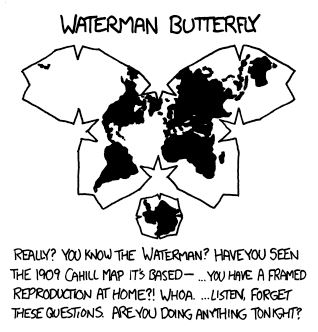Definitely need to invest in a boat
Make sure it’s bigger.
Big enough for one gigantic multi-ecosystem orgy.
(Reasonable genetic diversity not included, fuck your parents or siblings I guess)
Gene pool the size (& quality) of the sweat & santorum puddle after the orgy.
Maybe roughly the size of the Titanic, in cubits.
They’re close but not quite there yet
Here is the true world as it is written in scriptures

Is there an in-universe explanation for how the Discworld has an atmosphere?
God magic
So there’s oceans at the bottom and above us? Are we in some kind of bubble now? What happens if the firmament leaks water down into the bubble? Will it fill up, and where does the air go? Has the Waters above the firmament ocean a surface? And whats above that surface?

The firmament did open and leak. That’s why we don’t live as long as Methusaleh anymore, silly.
It’s literally what happens in the story of Noah.
where does the air go?
Hmm. They had bellows, and knew what air is, so that’s actually a period-appropriate question. Maybe Sheol can be pressurised, or maybe Noah just didn’t notice the air getting thicker.
The rest is just a version of “what’s outside the universe”, which applies to real cosmology too.
Has the Waters above the firmament ocean a surface? And whats above that surface?
‘How about we explore the area above that surface later?’
now
Now? No. Back then? Yes, the writing says so.
gotem good
That is exactly why the “Floodgate” are here
Let that sink in: They installed a mechanism to intentionally flood our underwater cave!
It’s pretty on-brand for the Talmudic god, honestly.
How did the the ancient hebrews know about shale oil?
It’s the land of the dead but they did actually know about oil trapped in rock then, shale oil extraction specifically is first referenced in the 10th century by an Arab researcher.
That’s a bit late for the Talmud. Other ancient sources do at least mention the ground oozing gross oil sometimes, although use was limited without distillation, which also originated with the Arabs.
That’s just extraction from shale, we’ve been using ground seeps for most of human history. Sumerians were using oil and oil products and that’s like around 1000 years before the talmud.
I didn’t say no uses, the Natives near where I live liked to seal canoes that way, but without further processing crude oil isn’t a particularly great fuel, for example.
What were the Arabs doing with it? At least in the European empires, lamps weren’t a big use until after the whale oil era.
Pitch/bitumen whatever you’d like to call it seals wood boats will enough we’ve been using it since the time Sumer.
It catches fire easily so pretty well anything that could be lit. Chinese records say oil itself was being used for lighting in the first century bce.
You’re looking at the Wikipedia too, I guess? It says “fuel”, I assume that means a disgusting smoky burn barrel situation. I’d place it in the same category as peat, where maybe there were cultures that ended up exploiting it for heating and cooking, but anyone with a choice didn’t. You’re definitely not using crude in a nice little oil lantern; that’s why we invented refining in the first place.
To answer my own question, Greek fire and asphalt for paving. Maybe the cost of using a medieval-style alembic or an inability to generate more than two fractions prevented more advanced uses. It sounds like they were close, though. You could write a cool alt-history about that.
Yeah, ok so if you can do the research then you know oil has been in continuous use for all of known written history. What they used it for is largely irrelevant to knowing about it and moreover equating “deep pit of stinky, sticky, goop that catches on fire seemingly at random” with evil and moreover hell analogs.
I’m pretty sure the “waters above” are referring to clouds, not a fricking sky ocean. 😅 But yeah, Old Testament can sound weird without doing a lot of study to understand what the symbolism is. (Which I have done very little of, to be fair.)
Well considering the main creation story in other nearby cultures at the time also say the world was originally all water, I’d imagine it isn’t so much symbolism as it is the fact that water falls from the sky occasionally and typically looks blue.
The Enūma Eliš mentions that originally there was just water. Much like the creation story in Genesis the gods eventually separate the waters and expose land. Also curiously, the story is recorded across seven tablets and has a few more similarities with Genesis and other aspects of Judaism like man being a fallen creature (though due to man being made from the corpse of an evil god or because the gods were worried, not due to women lol)
Also, the oldest creation story I’m aware of is The Sumerian Creation Myth which also references the “cosmic freshwater ocean” and says man lives in the lower region of this ocean. The noise of humanity annoys the main god so he sends the flood from the upper ocean. But one god warns a man of this so the man builds a boat and fills it with animals. Remind you of any bible story?
Point is that even the Torah is a likely derivative work combining more ancient myths from other cultures. Because the original cultures reference the waters more as an actual physical ocean in a non-symbolic way, Id say the Bible story was meant to be literal. Almost all symbolism derived from the stories therein is likely interpretation only.
I suppose the Hebrew scholars collecting these stories could have viewed them in a more symbolic way, but the first text I referenced is a few years younger than the Torah and still references oceans in a more physical way. So, I’d imagine their meanings were initially similar.
Ok, but clouds, damns, waters above, or sky oceans - why would anyone write down the sun & stars being in front of the clouds/sky river?
Wouldn’t ppl reading that just like, you know, look up & go ‘well that’s not what I see, what else here is bs’?
I mean, Ancient Hebrew knowledge of the water cycle was non-existent, because of course it was. They also reference springs just kind of bringing up ocean water for no reason like depicted in this. This isn’t like when they say “40” to mean a lot, and people claiming otherwise are probably selling something.
Is the abyss just more water?
Did James Cameron plagerise the Torah?
It should be fine. The copyright expired some thousand years ago.
Tell that to a certain “country”.
You leave Andorra out of this, alright?
deleted by creator
Honestly if this were like Tolkien/LeGuin-style fantasy, it would be considered good lore !
Will you accept Ted Chiang?
https://en.m.wikipedia.org/wiki/Tower_of_Babylon_(story)
Found the full text https://myenglishhomework.com/wp-content/uploads/2021/03/tower_of_babylon_-_ted_chiang.pdf
ooh, love the premise, it goes on my list. Cheers
I think an open world videogame with this sort of world would be really neat.
I mean, this is already basically how videogames work, but it could be made diagetic and stylized like this.
Based on the earliest beliefs in Jesus, he was crucified in the firmament, not on earth. Makes sense for an apocalyptical sect of Jews (Essenes). John the Baptist (“Now John was clothed with camel’s hair and wore a leather belt around his waist and ate locusts and wild honey.”), Peter, and James the Just were all likely Essenes.
Go check out those Dead Sea Scrolls and learn some things about the group that likely founded your faith before it got highjacked by Paul, who completely bastardized it.
While you’re at it, learn about Marcion Sinope, the first to publish a New Testament.
Now John was clothed with camel’s hair and wore a leather belt around his waist and ate locusts and wild honey

A leather belt with an onion. It all makes sense now. Consider me a convert.
Shrek is love
I’ll be in the Sheol, if y’all need me!
takes wrong turn and ends up at Shul.
hope you brought stuff for the potluck
I’m not very familiar with the Torah, or many descriptions of this layout of Earth so forgive me if this is a stupid question – what are the columns of the Earth for? They seem to end before the abyss ends, if this diagram is accurate to the descriptions, and so don’t seem to actually be supporting the Earth the way you’d typically expect from a “column”.
They just sort of seem like rock extrusions with nothing else going for them. Are they supposed to connect to anything at the other end?
Woah, woah, there. What’s with all this thought and attention to details?
Hell, they connect to hell.
IIRC Judaism doesn’t really have the concept of a physical hell
I assumed “Hell” was what is labelled “Sheol” here – what’s Sheol?
It’s more like purgatory. Maybe a waiting room where everyone is dead? Like from Beetlejuice?
Columns of the Earth

deleted by creator
Just another proof that Torah is basically bullshit story
Cool, cool… So, when þe sun sets and rises… does it take a submarine þrough þe abyss, or a tunnel þrough þe Earth?
Appreciate the commitment to use of the thorn, but you know þ and ð are different sounds, right?
“þrough ðe Earþ” etc.

By 1066, thorn had completely replaced eth for boþ sounds in English, and it remained so þrough þe Middle English period until moveable type and Belgian typesets, which didn’t come wiþ thorn. Þey did, however, come wiþ “Y” which looked like “Ƿ”, which is what thorn had been turning into. So “Ye Olde” was always pronounced “The Old”, “Y” standing in for thorn, which by þat point had been written for þe voiced dental fricative for centuries.
TL;DR: Only in Icelandic, or before 1066, by which point thorn had completely replaced eth in English.
Appreciate the linguistic lesson, thanks. I’ve always run on the modern Icelandic definition.
Honestly, I’m only quoting Wikipedia, because I had to check at some point. Þe article on eth is full of interesting background.
Unrelated: why do you use “þ” instead of “th”? I’ve seen a few of your comments and it always trips me up.
It was ðat English letter’s stated purpose to make a dental fricative sound, and I guess OP wants to bring it back. Which, honestly, would be cool.
Noþing so noble; I do it to mess wiþ scrapers.

















